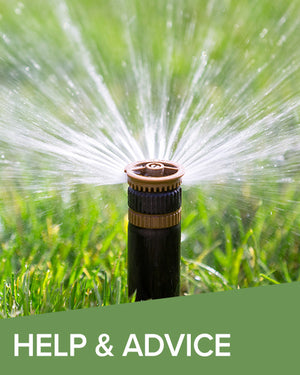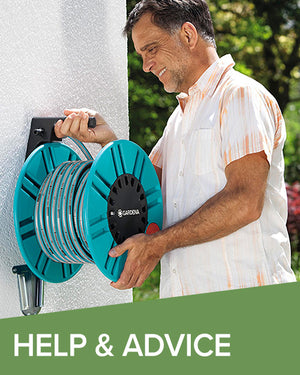There are some really simple ways you can keep your garden hose in great condition all year long. Below we discuss some of the top tips for garden hose care below.
Don't let water build up in the hose
Leaving water in the hose can cause problems with unwanted bacteria in the interior funnel of the hose. This can cause issues with degradation to the inner tube, so after every use, drain out all the excess water before putting the hose away. This is why you should always let the hosepipe dry whenever you use it. Water pressure can build up if there's excess water which can lead to a burst hosepipe. Turn the water off at the spigot and allow the hose to drain. Angle the garden hose downwards so any excess water can drain out easily.
Be mindful of colder conditions
Water expands when it freezes, which means if you leave water in the hose in winter, the water can freeze, expand, and cause cracks and holes to appear in the lining. Caring for your hose in winter mainly consists of proper storage, and avoiding exposing it to freezing temperatures which could affect the hosepipe material.
Avoid direct sunlight
In the summer months, be mindful to clear the hose of any excess water after each use. In the summer, leftover water can heat up if exposed to the sun's rays, which can harm the rubber. Direct sunshine can damage, crack or rupture the exterior layer of the hose. Water left inside the tube can also heat up and potentially damage the inner lining. UV rays, over time can also damage the outer hose lining, so try to store your hose out of direct sunlight. If this is unavoidable, use a hosepipe cover.
Don't use the hosepipe nozzle as a handle
Manoeuvring your hose using the nozzle can damage the nozzle connection, causing leaks. Dragging your hose along in this manner won't do the connecting parts any good, so it's always worth moving the hose when it is still coiled up, if possible.
Store your hose away properly after use
Avoid leaving your hose in a mangled mess on the lawn after using it. This can create kinks in the hose lining, that can eventually lead to cracks and tears. Proper storage options such as a hose reel keep your hose in good condition all year round while keeping it safe and out of the way, where it can not only be exposed to harsher weather conditions but can be a trip hazard too!






 hello@easygardenirrigation.co.uk
hello@easygardenirrigation.co.uk
 +44 (0) 1646 402 050
+44 (0) 1646 402 050